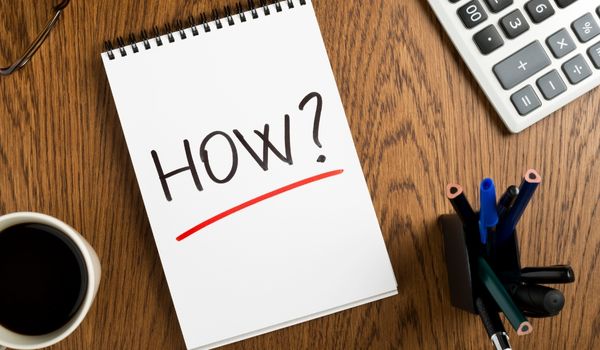If your home runs on well water, you’re in charge of your own water quality. Unlike city water, which gets tested regularly, private wells don’t come with built-in oversight — no one’s checking what’s coming out of your tap but you.
The good news? Testing your water is easier than you think. Whether you’re worried about bacteria, lead, or just want to keep your appliances running clean, a simple test kit can tell you what’s in your well — and what to do next.
🧪 Key Takeaways
- 🚿 Private wells aren’t regulated — testing is your responsibility
- 🧫 Not all contaminants have a smell, taste, or color
- 🦠 Bacteria, nitrates, iron, and heavy metals are common well pollutants
- 🧪 DIY kits work well for basic issues — but labs offer the most accurate results
- 💧 Annual testing is recommended by the CDC — more often if you notice changes in taste or clarity
- 🛠️ The right test helps you choose the right filter — and avoid costly guesswork
💧 Why You Should Test Your Well Water

Just because your water looks clean doesn’t mean it’s safe. Many harmful contaminants are invisible — no color, no odor, no taste. If you rely on a private well, regular testing is the only way to catch problems early and protect your health.
But it’s not just about safety. Poor water quality can quietly wreck your plumbing and appliances, leaving you with clogged pipes, stained fixtures, or a busted water heater — all without warning.
⚠️ Why Testing Matters
- 🧬 Bacteria and parasites can enter through runoff or cracks in your well casing
- 💀 Heavy metals like lead and arsenic have no taste or smell — but long-term exposure is toxic
- 🪨 Hard water minerals aren’t dangerous, but they cause expensive damage over time
- 🧪 pH and iron levels can reduce filtration performance if not addressed
- 🧼 Testing helps you choose the right filter — not just any filter
🧠 Helpful to know:
Not all filters work on all contaminants. Before installing a system, test your water — so you don’t waste money on the wrong solution. You can explore our top-rated systems for wells once you know what you’re dealing with.
🧪 Common Contaminants in Private Wells

Private wells might seem “cleaner” because they skip chlorine and other chemicals — but they come with their own risks. Unlike treated city water, well water is raw and unfiltered, which means it can contain anything from bacteria to heavy metals depending on your geology, surroundings, and maintenance.
Some of these contaminants can affect your health. Others are less serious but still cause headaches — like stains, strange smells, or buildup in your pipes. Knowing what to test for helps you tackle both.
| Contaminant | Why It Matters |
|---|---|
| 🦠 Bacteria (Coliform, E. coli) | Can enter via runoff or cracks; causes illness and must be addressed fast |
| 🧫 Parasites (e.g. Giardia) | Carried by animal waste; triggers gastrointestinal issues |
| 🧪 Nitrates | From fertilizers; especially dangerous to infants |
| 🔩 Lead | Comes from pipes or faucets; [read more here](https://qualitywaterlab.com/info/signs-of-lead-in-tap-water/) |
| ☠️ Arsenic & Chromium | Natural metals; long-term exposure can damage liver, kidneys |
| 🪨 Hardness Minerals (Calcium, Magnesium) | Not harmful to health, but damage plumbing and appliances |
| 🧡 Iron | Stains fixtures and can [damage softeners](https://qualitywaterlab.com/whole-house/how-to-remove-iron/) |
| 🧼 PFAS | Synthetic “forever chemicals” with known health risks — hard to remove |
| 🌾 Pesticides & Herbicides | Linked to cancer; often found near farms, golf courses, or roadside areas |
| 🏭 Industrial Waste | Includes VOCs, solvents, gasoline — risky if near landfills or factories |
🧠 Helpful to know:
Where you live — and what’s around you — plays a big role in your water quality.If your home is close to farmland, industrial areas, or older infrastructure, it’s smart to test for a wider range of potential issues. Here’s a deeper look at common well water problems that can help narrow things down.
🧰 How To Choose the Right Water Test Kit
With so many contaminants out there, it’s tempting to test for everything. But the truth is — most issues come from what’s around your home, like nearby farms, landfills, or old plumbing. That’s why the smartest way to test your well is to match the kit to your actual risks.
You don’t need to spend hundreds to get answers. Just start with the essentials — and expand if your location calls for it.
🔍 Focus on These Core Contaminants
- 🦠 Bacteria – Always test for coliforms and E. coli
- 🧪 Nitrates & Nitrites – Common in farm and septic areas
- 📉 pH & TDS – Check acidity and total dissolved solids
- 🔩 Heavy Metals (Lead, Arsenic, etc.) – Especially if you have older pipes
- 🧼 PFAS – Important if you’re near industrial zones or concerned about “forever chemicals”
Need a starting point? The CDC recommends testing once a year for bacteria, nitrates, pH, and total dissolved solids.
🧠 Helpful to know:
Many kits screen for the basics, but if you want a full breakdown, a lab test is your best bet. See our water testing section and look into: Tap Score from SimpleLab it’s an excellent all-in-one option that even recommends filters based on your results.
🧫 DIY vs. Lab Testing: What to Expect

You don’t need to be a chemist to test your well water. Whether you’re mailing a sample to a lab or dipping a test strip at home, both methods have their place — it just depends on how accurate you need the results to be.
| 🧪 Lab Testing | 🧫 DIY Test Kits |
|---|---|
| ✅ Most accurate and detailed | 🧾 Great for basic screening (pH, iron, hardness) |
| 🧬 Detects a wide range of contaminants — even in trace amounts | 💵 Budget-friendly — usually under $30 |
| 🧾 Results often include a clear summary + filter suggestions | 🧪 Get results in minutes with color-match charts |
| 🕓 Takes 5–10 days depending on the provider | ⚠️ Less precise — not ideal for health-related concerns |
| Best for: Lead, bacteria, PFAS, arsenic, and health-impacting pollutants | Best for: General upkeep, water softener checks, spotting changes |
🧠 Helpful to know:
If you’re seeing orange stains, a weird smell, or your water just feels off — don’t guess. Start with a quick DIY test, then confirm with a certified lab if anything seems out of range.
🧪 How to Test Your Well Water (Step-by-Step)

Testing your well water doesn’t require special tools — just a clean sample and a little care. Whether you’re using a mail-in kit or a DIY test, how you collect your sample affects your results.
Here’s exactly how to do it right:
🔬 Step-by-Step Well Water Test
- Pick the right faucet Choose a tap you use for drinking water — typically the kitchen sink.
- Let the water run Run cold water for 1–2 minutes to flush out stagnant water sitting in the pipes.
- Use a clean container Follow the test kit’s instructions. Lab kits usually provide a sterile sample bottle.
- Avoid hot water or filters Don’t use water from a filtered tap, fridge line, or hot water source — it could skew results.
- Ship quickly (for lab tests) If you’re mailing a sample, seal it tightly and send it back the same day for best accuracy.
🧠 Helpful to know:
If you’re testing for bacteria, don’t touch the inside of the cap or container. Even tiny bits of soap or skin contact can throw off results. For best accuracy, consider a certified well water bacteria test.
❌ How NOT to Test Your Water Quality
It’s tempting to grab the cheapest gadget and call it good — but when it comes to water quality, not all tools are created equal. One of the biggest misconceptions? That a TDS meter tells the whole story.
⚠️ Why TDS Meters Fall Short
- 📉 TDS stands for “total dissolved solids” — it mostly picks up minerals
- 🧪 It won’t detect bacteria, lead, pesticides, or other toxic contaminants
- 💡 A spike in TDS might suggest a change in water quality — but it’s not specific enough to diagnose a problem
- 🧻 They’re better for monitoring a softener or spotting sudden shifts — not full-on testing
🧠 Helpful to know:
Think of a TDS meter like a smoke alarm — it might signal a problem, but it won’t tell you what’s burning. Save it for checking your water softener’s performance — not your health.
🚨 What To Do If Your Water Is Contaminated

So your test results came back… and something’s off. Don’t panic — most issues have simple fixes. Whether it’s bacteria, lead, or just a mineral imbalance, the right filter can usually take care of it.
That said, some problems needs your attention — especially anything that could impact your health.
✅ Your Action Plan
- 🧼 Switch to bottled water for drinking and cooking if you see red flags
- 🧪 Retest with a certified lab to confirm unexpected DIY results
- 🚿 Avoid showering or washing dishes if contaminants are chemical or bacterial
- 💧 Install a filter system matched to your test results — one size doesn’t fit all
- 🧰 For complex issues, consult a water treatment specialist or your local health department
🧠 Helpful to know:
Not all filters are created equal. Some remove sediment; others remove lead or bacteria. Once you know what you’re dealing with — check out our recommended systems for well water to find one that fits your situation.
🏁 Final Thoughts
If your home relies on a private well, testing isn’t optional — it’s essential. You’re the first (and only) line of defense between your tap and your health.
The good news? You’ve got options.
Whether you’re going DIY or sending a sample to a lab, water testing is affordable, simple, and one of the smartest things you can do for your home. And once you know what’s in your water, finding the right filter is easy.
💧 Start with a test — and take control from there.
 108 people found this helpful. Was this guide helpful to you?
108 people found this helpful. Was this guide helpful to you? 


